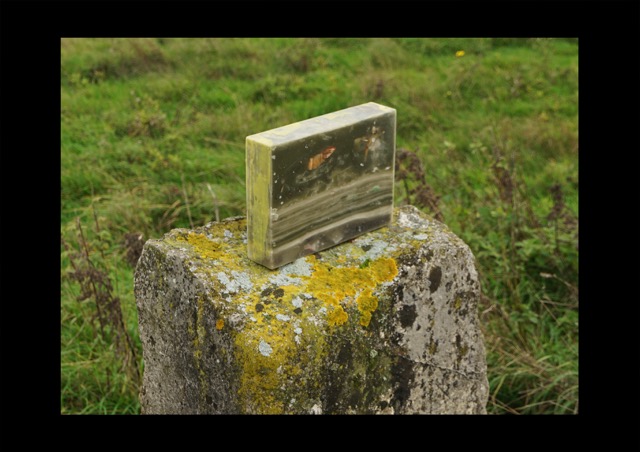

Belgium: We start in Essen, close the haven-city of Antwerp and the Dutch border, where we co-create the partial sculptures in a workshop with local people. During these workshops we make some portraits of these early co-creators. The first placements will be done with our results from this workshop, too. Holland: Crossing the border from Belgium, we continue our placements each 48 kilometer heading towards Rotterdam, Utrecht, Amsterdam and Groningen. Since we do not have this culturally and historically rich area on our main routes in W#1 – W#4, our interest of understanding the values of this region is big. In Belgium and Holland we are facing an anthropological approach towards the local people/co-creators. Belgian Anthropologist Mitte Scheldemann will guide, monitor and evaluate the process with us. With her help we define the standards for our scientific approach on our anthology of human values that will follow us around the globe. Germany: Crossing the border to Germany, still following the old routes of the Hansa, it presents itself and its inhabitants in a different glance with every placement we do. Via Hamburg we arrive at the Baltic Sea: Lübeck, Rostock, Greifswald and arriving at the Island of Usedom. Slavic sounding city names remind us of the rich cultural and political exchange in this region ever since. At this place we cross the border to Poland: Placing our sculptural mosaic of WEARTH encaustic wax bricks each 48km along the Baltic Sea coast, we reach the cultural heritage Gdansk. From here it is only a stone’s throw to the Russian exclave Kaliningrad, where we also place some stones with the locals. In Germany, Poland and Russia we are targeting at an artistic outcome of the literary portraits by working together with German, Polish and Russian speaking authors, who give written testimony of the values accounted for in their respective languages. This pilot gives us a better feeling and insight of the bigger picture- of OUR GLOBAL SCULPTURE WEARTH. Each placement opens our view for a different perspective, for individual ways of approaching life, for the vast variety of values on our planet. Both routes, Belgium – Holland – Germany and Germany – Poland –Kaliningrad will be followed by our camera team. All the outcome- the scientific essays, the literary portraits, the documentary movie and the photographs will be published to gain as much attention as possible. The attention is the base for all the support we need to make the global sculpture come true. Thanks for all co-creating with us; this trip is WEARTH it!
Contact us for an individual workshop at your place, firm or to co-create with us by other means.

The placement of the WEARTH wax brick 4A1A – TRUFLE took place on a hill above the river Wylye. On the top of the hill was a stone circle, consisting of 22 steles. Though it remembers a Celtic stone circle, it was created later, probably some hundred years ago by someone to whom this heritage was so important that (s)he created this circle. The stone itself deals with earthy colours, the colours of the flag of the United Kingdom, geological layers and landscape. Our co-creator to the placement and whom we eventually interviewed on his values was Stefan.
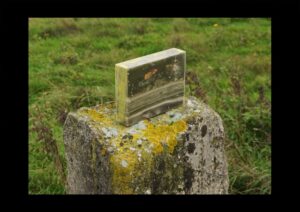
The seventh side of the brick is its enclosures that create its uniqueness. With the placement, the eighth aspect is realised, the land art placement complete. Here, with TRUFLE (4A1A) layer upon layer is creating the image of a landscape with a dark and stormy sky . The shades of yellow that you find in the brick have about the same colour range as the lichen on the stele its placed upon.
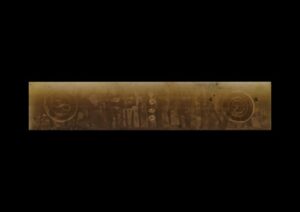
Chiaroscuro (Italian: ‘light-dark’), chiaroscuro painting, also known in French as clair-obscur, refers to a design medium developed in the late Renaissance and Baroque periods in graphic art and painting that is characterised by strong contrasts of light and dark and serves to enhance both the spatial and the expressive. Important representatives include Caravaggio and Rembrandt van Rijn and their successors. In contrast to Leonardo’s soft sfumato, the painters of the 16th and 17th centuries were primarily concerned with dramatic expression, which can be achieved in oil painting by placing subjects in the light against a dark background.
However, I do not believe that the artists who introduced this technique were only interested in drama, but also in cosmic observation. Black dominates the cosmos, light is rare. The same applies to the light of consciousness. While light itself is best represented by shades of white, the colour of consciousness is in the realm of amber: It shines ‘from within’, corresponding to Leonardo’s concept of lumen. The main colours of this visual language are shades of black, amber and white.
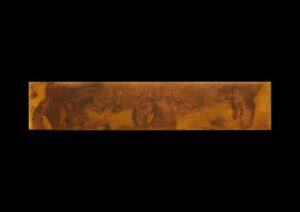
When talking about gold, people have different associations. In German, ‘Gold, Göld (A Göld, the Viennese likes to say, taking the real space between the two words), Geld’ are closely related, but in other languages too, Midas has managed to make us think primarily of material wealth when it comes to AU / Aurum / Gold. I find two things really interesting about this molecule: firstly, the energy of the Big Bang was not enough to create this heavy element; a supernova, a dying star, was and is needed. In my complete colour theory (to be published soon), or rather not a theory but a ‘description of the nature of colours in relation to humans* (what do I know about the perception of colours in fireflies), it is pointed out that all previous colour theories, especially those of Newton, Goethe or Itten, fail completely when it comes to metallic colours. (As do screens and other light based media) So in future, I hope, you will see the colour gold in a slightly different light when you see a gold frame in the Louvre or another classical museum, or even stand in front of an icon that consciously uses this unique colour to represent the highest values. Recently, I saw Ugo Rondinone’s ‘The Alphabet of my Mothers and Fathers’ at Esther Schipper in Berlin. It is a cycle of works that relies heavily on craftsmanship and the value of gold, and simply invokes and works with it. You should take a look at it if you get the chance: https://www.estherschipper.com/exhibitions/1308-the-alphabet-of-my-mothers-and-fathers-ugo-rondinone/
But I want to have an effect in my time (Ich will wirken in meiner Zeit), as Käthe Kollwitz so beautifully and correctly said, in line with my heart. This is why we have created an alternative to gold with Wearth.Worth, which surpasses the qualities of this unique element in two ways and can be a sustainable alternative to the oil-dollar combination, which seems unavoidable (as if it were a conditio a-priori), if the pressure of suffering from fossil and US-American dominance is high enough. While gold and lead shield against many radiations, the radiation of a neutron bomb can only be blocked by wax/paraffin, molecularly there is hardly anything more resistant. Furthermore, our encaustic WEARTH wax tiles not only have the advantage of being absolutely unforgeable, but, unlike gold, they are also available in unlimited quantities, making them an actual 3D counterpart to two-dimensional accounting, whether in digital or old-fashioned banknote form. Well, if you are interested and want to get involved, please contact us at jkk (at) wearth (dot) eu.
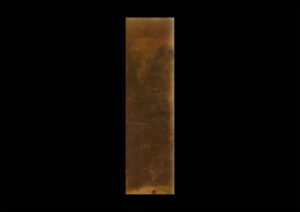
The greatest colour of the universe: black. The unanswered question about the mass, character and origin of ‘dark matter’ can possibly be answered with the knowledge that I received from shamans of ancient Mexico: every thought ever conceived (not only humane thoughts count) has weight and all together form the dark sea of consciousness…. Remaining with this thought, thinking it further, it is important to note that thoughts become three-dimensional, and thus physically perceptible, by being thought often enough and by enough people. Then, little by little, a larger and more perceptible body emerges from the thought. This thought is open to verification or falsification, but it is at least a starting point for explaining a phenomenon in a universe in which almost everything changes but nothing is lost…. And the desire to recognise the underlying timeless, eternal laws of this universe, coming from the character of the painted image, which does not move, while everything in and around the cave moves and changes. This desire remains, coming from the painted image, and extending into the practice of philosophy and its children, the sciences.
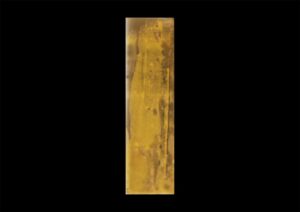 GEORGES HALDAS:
GEORGES HALDAS:
Les fleurs s’ennoblissaient
du regard des passants
La vie à profusion
prodiguait ses merveilles
Mais lui perdu toujours
dans ses rêves majeurs
préférait se construire
des jardins somptueux
des terrasses de luxe
des palais enfantins
Malheur à ceux qu’abusent
les richesses mentales
au point de ne plus voir
au loin briller la mer
l’air tremblant sur les blés
la rosée du matin
Et tout ce que la terre
a déjà de divin
The flowers were ennobled
by the gaze of passers-by
Life in profusion
lavished its wonders
But he was still lost
in his major dreams
preferred to build himself
sumptuous gardens
luxurious terraces
childlike palaces
Woe to those who are taken in
by mental wealth
to the point where they can no longer see
the sea shining in the distance
the air trembling on the wheat
the morning dew
And all that the earth
has already of the divine
As soon as you can.
Sculptor: Jens B. K. Kaul
Where: jkk productions, Berlin
When: 2022